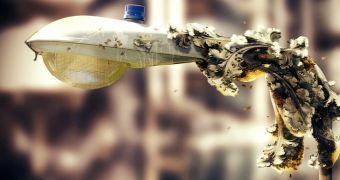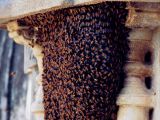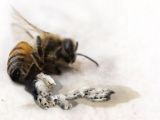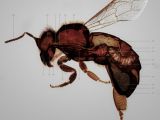Nature has shown, again and again, that swarms of small creatures, especially insects, can create truly remarkable structures. We only need to look at an anthill or beehive to see it. In fact, certain people have formed a theory that bees' ability to build honeycombs could be turned into a 3D printing technique in the future.
Geoff Manaugh, former editor-in-chief of tech website Gizmodo, and designer John Becker have recently laid out a future scenario in an interview with Dezeen Magazine.
In it, they say that bees could be genetically modified and trained in the future to print and repair buildings and other structures by producing concrete, or something similar to it, instead of honey.
Sounds like something out of a science-fiction movie, but so did orbital space stations and 3D printing technology usable in space, and they all exist now.
To make the new dream happen, the genetically modified bees would be housed inside a mold the shape of the area needing repair. Upon being released, they would be able to fix the damage unsupervised.
Manaugh has even said that bees could be trained to eventually build altogether new structures, even if he has no idea how something like that could be done.
The key lies in worker bees, which already know how to function as part of a group, give mind, and can already produce certain materials that are similar to what scientists create in labs. A New England-based species can produce a polymer similar to cellophane naturally, and it could be used as an alternative to plastic.
To skeptics who think trained bees are a pipe dream, the two pointed out that silkworms were prompted to produce naturally dyed silk just by being put through a special diet.
Admittedly, living things can't and shouldn't just be exploited for our own ends, but there are definite benefits in environment friendliness associated with the concept. For one thing, biologically produced substances can more easily be naturally decomposed over time, basically eliminating the issue of pollution.
Alas, this grand idea is still just that: an idea. Neither Geoff Manaugh nor John Becker has a good idea how it will be accomplished, if at all, or how long it will take. Probably several decades at least, because even if a viable breeding/training method is established, it will take time to make the colonies.
And it will take even longer to get people to stop jumping in fright at the ominous buzz that all bees make (assuming the tendency to sting when “threatened” can be trained out of the insects at all).

 14 DAY TRIAL //
14 DAY TRIAL // 





